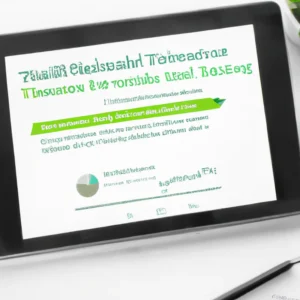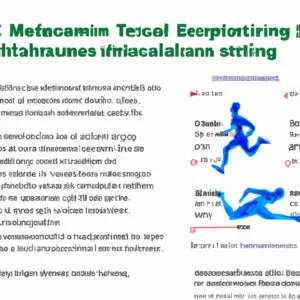Unlocking Heart Rate Variability: Your Hidden Superpower
The Science Behind Heart Rate Variability: Understanding Its Role in Stress Management and Performance Optimization
Heart rate variability (HRV) has gained attention recently. It helps us understand stress and enhance performance. Analyzing HRV reveals our body’s response to stress and overall health. This blog post explores HRV’s science, its significance for stress management, and its role in optimizing performance.
What Is Heart Rate Variability?
Heart rate variability measures the time variation between heartbeats. Unlike a steady heartbeat, HRV fluctuates. The autonomic nervous system (ANS) controls these fluctuations. The ANS includes two main branches: sympathetic and parasympathetic systems.
The sympathetic system prepares the body for action and increases heart rate during stress. Conversely, the parasympathetic system promotes relaxation and slows the heart rate. A higher HRV indicates a well-functioning ANS, reflecting balance between both systems. A low HRV suggests stress or health issues.
The Connection Between HRV and Stress
HRV provides insights into our stress levels. Stress activates the sympathetic system, decreasing HRV. Studies show individuals with higher HRV manage stress better and adapt to challenges effectively.
Research supports this connection. One study found that individuals with higher HRV report lower anxiety levels and better emotional regulation. Monitoring HRV proves important for stress management.
Practical Tips for Monitoring HRV
You can monitor HRV using various tools. Wearable devices like smartwatches and fitness trackers often include HRV monitors. These devices provide real-time heart rate and variability data.
Consider these practical tips for monitoring HRV:
1. **Choose the right time:** Measure HRV in the morning, right after waking up for baseline accuracy.
2. **Use consistent methods:** Always use the same device for tracking HRV to ensure accurate comparisons.
3. **Focus on breathing:** Practice deep breathing exercises before measuring HRV to enhance reading accuracy.
Advice for Improving HRV
Improving HRV leads to better stress management and overall health. Consider these strategies:
– **Practice mindfulness:** Mindfulness techniques like meditation reduce stress and enhance HRV.
– **Engage in regular exercise:** Physical activity boosts HRV. Aim for at least 150 minutes of moderate exercise weekly.
– **Prioritize sleep:** Quality sleep is essential for maintaining high HRV. Aim for 7-9 hours each night.
– **Maintain a balanced diet:** A diet rich in fruits, vegetables, and healthy fats supports heart health. Omega-3 fatty acids improve HRV.
The Benefits of High HRV
High HRV offers numerous benefits. It indicates a robust and adaptable autonomic nervous system. This adaptability helps the body effectively respond to stress.
Individuals with high HRV often report better physical performance. Athletes use HRV to optimize training, gauge recovery, and adjust workouts.
Additionally, high HRV correlates with improved mental health, reducing anxiety and depression symptoms. Monitoring and enhancing HRV leads to a better quality of life.
The Role of HRV in Performance Optimization
HRV significantly impacts performance optimization. Athletes and professionals benefit from understanding their HRV. Tracking HRV provides insights into physical and mental states.
For athletes, high HRV indicates training readiness. Elevated HRV allows them to push harder. Conversely, a drop in HRV signals the need for recovery, preventing burnout and injuries.
In the workplace, HRV enhances productivity. Employees with higher HRV experience less stress and greater focus. Encouraging HRV monitoring in corporate settings promotes a healthier, more efficient workforce.
Conclusion
Heart rate variability is a powerful tool for understanding stress and optimizing performance. Monitoring and enhancing HRV provides valuable health insights. This knowledge aids in managing stress and improving physical and mental performance.
Incorporating mindfulness, exercise, and proper nutrition can elevate HRV. Embrace the science of heart rate variability, and take charge of your health and performance today.
Below are related products based on this post:
FAQ
What does heart rate variability (HRV) indicate about my health?
Heart rate variability measures the time variation between heartbeats and reflects the functioning of the autonomic nervous system (ANS). A higher HRV indicates a balanced ANS and suggests good physical health and stress resilience, while a low HRV may signal stress or health issues.
How can I effectively monitor my HRV?
You can monitor HRV using wearable devices like smartwatches and fitness trackers. For accurate readings, measure your HRV in the morning right after waking up, use the same device consistently, and practice deep breathing exercises prior to measurement to enhance accuracy.
What are some strategies to improve my HRV?
Improving HRV can be achieved through various strategies such as practicing mindfulness and meditation, engaging in regular physical exercise, prioritizing quality sleep, and maintaining a balanced diet rich in fruits, vegetables, and healthy fats. These practices collectively support heart health and enhance HRV.















Post Comment